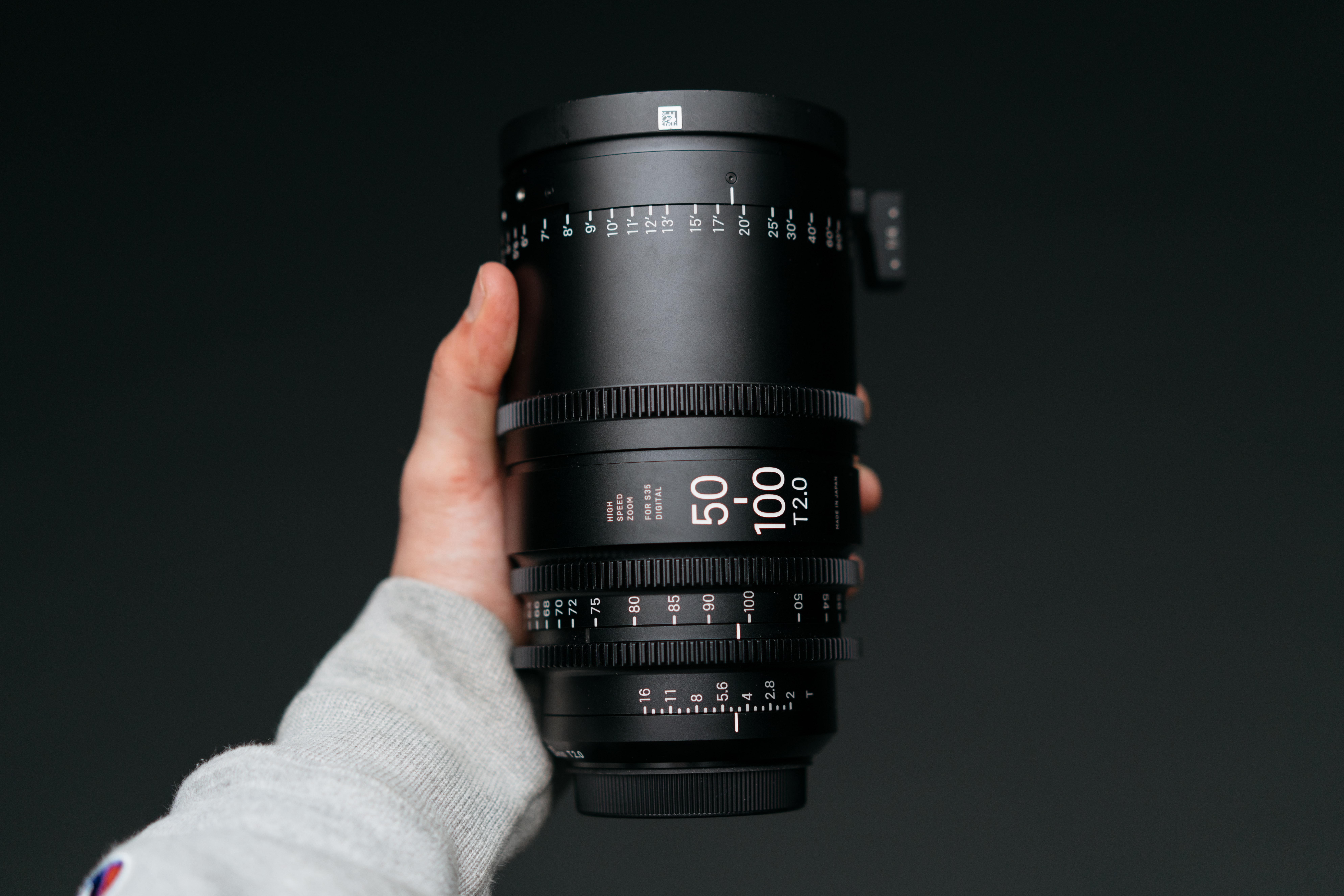Cinematographers are faced with many difficult decisions in pre-production, choosing a prime or zoom lens is just one of the many technical considerations for a production. Whether it is brand preference, weight, fastness or which is the most cost effective, there are a few things to consider.
Prime Lenses:
Prime lenses are the more traditional choice of lens in most professional productions. Although high end primes such as the Ziess Supreme Prime 40mm T1.5 PL, cost around £13,500, prime lenses tend to be significantly cheaper when comparing them to high end zooms. This is due to the fact they don’t contain as much glass. Today, there are many affordable options for both. Prime lenses have a fixed focal length, which is the most obvious factor that sets them apart from zoom lenses. Some of the many focal lengths include: 18mm, 21mm, 25mm, 40mm, 85mm etc. With a fixed focal length means few elements within the lens, which is the reason why they are cheaper and more compact.
As they are optimised for a single focal length, it means they can be designed to capture an extremely sharp image. It’s also a worthy mention that prime lenses existed well before zooms, therefore, have been refined over the years to give maximum performance. Many high-end prime lenses are incredibly fast and offer a large maximum aperture, compared to zoom lenses which don’t often reach a maximum aperture larger than T2.8. With prime lenses as fast as T1.4, they perform exceptionally well in low light conditions whilst maintaining focus.
In today’s industry, prime lenses are still first choice for professional filmmakers. Since the early days, they are what created the film look. The incredible quality of prime suggest why they remain a DP’s choice to get the job done.
Pros -
- Cheaper (compared to zoom lenses)
- Light and compact
- Sharp with better image quality
- Fast
Cons-
- No flexibility
- Time consuming
 Photo by Jakob Owens on Unsplash
Photo by Jakob Owens on Unsplash
Zoom Lenses:
Although less traditional within the film industry, today zoom lenses are widely used with good reason. Generally, zoom lenses have a more complex build, due to needing more moving parts to achieve different levels of magnification at different focal lengths. With a more superior build, comes a heftier price tag. Although prime lenses too can cost thousands of pounds, the zoom equivalent will often be even more expensive. For example, the Zeiss 70-200mm T2.9 CZ.2 Cine Zoom Lens PL, costs roughly £15,554.00. When it comes to the glass put on the camera, you get what you pay for whether that be a prime or a zoom. If you buy cheaper glass, there is always a risk of losing quality. The cost benefit of using a zoom lens is that they replace multiple prime lenses.

Photo by Keagan Henman on Unsplash
As of September 2020, Arri announced four new signatures zoom lenses, an extension to their signature lens family. The four new lenses include 45-135/T2.8 and 65-300/T2.8, followed by the 16-32/T2.8 and 24-75/T2.8. This came as a request for high quality zoom lenses within the industry, designed to match their high-end prime lenses in performance and quality. They also cover the largest zoom range in the industry and have a constant T stop with no ramping, suggesting how zoom lenses are fast developing.
The main advantage of zoom lenses is that they illuminate the need to change lenses frequently. This is beneficial in difficult situations, such as harsh weather conditions where you don’t want to expose the sensor for too long or when the camera is mounted in a hard to reach place. It furthermore comes with the benefit of having all the in between focal lengths.
Since zoom lenses are not optimised for a specific focal length, they commonly have a sweet spot which they preform best at. A common issue with zoom lenses is that they simply cannot match the quality of a prime. Often dropping off in sharpness, specifically around the edges as you reach tighter focal lengths. The convenience of multiple focal lengths in one lens can outweigh sharpness in some cases, but zooms are just a modern convince.
Another issue faced when using zooms, is that they aren't as fast. It’s unlikely to find a zoom lens faster than T2.8, without it carrying a hefty price tag. Through not being as fast as prime lenses, also means they aren’t a go to for low light situations. Additionally, in terms of aperture, many zoom lenses don’t have a constant aperture between focal range.
Pros -
- Cost effective
- Good for run and gun style shooting
- Versatile
- Convenient
Cons -
- Loss of quality
- No large maximum aperture
- Big and bulky
 Photo by Keagan Henman on Unsplash
Photo by Keagan Henman on Unsplash
To conclude, zoom lenses aren't out to replace a good set of primes, and should only be used with careful consideration for the production. If the production is heavily reliant on mounted crane shots or situations where a lens change may be difficult or impossible, zoom lenses are going to become a useful tool. However, if these aren't considerations, a solid set of prime lenses will allow better image quality. Furthermore, through using a prime lens allows the user to creatively pay more attention to how the camera is positioned and the focal length selected. In 2010, there were only two main manufactures of zoom lenses which were Angenieux and Cooke. But however, with the growth of high-quality zoom lenses such as the Arri Signature Zooms, the market is exceeding in growth.